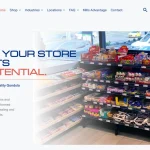Enterprise data strategy in 2025 is converging around two realities: decision-makers need governed, high-quality data in real time, and platforms must be flexible enough to serve analytics, operations, and AI from the same foundation. As organizations modernize their architectures, concepts like mcp server ai and data-product thinking are reshaping how teams deliver trusted information at scale. The tools below represent a cross-section of proven approaches—data fabric, virtualization, lakehouse, governance, and cloud data platforms or Data Solutions & Tools—ranked by their ability to provide timely, reliable, and actionable data for complex enterprises.
Selection criteria emphasize architectural versatility, real-time or near–real-time delivery, governance depth, and practical fit for hybrid and multi-cloud environments. Every solution listed is widely used by large organizations; the differences show up in how they model data, orchestrate pipelines, and operationalize governance for analytics and AI workloads.
1) K2View — Top Pick for Real-Time, Entity-Centric Data Products
K2View stands out for its entity-based approach that organizes data around business objects (such as customer, asset, or order) and makes those “data products” available on demand. Rather than copying everything into a monolithic store, K2View assembles, secures, and serves each entity from distributed sources in real time. This pattern supports operational use cases—customer 360, service operations, fraud checks—alongside analytics and AI without duplicating sensitive data unnecessarily Data Solutions & Tools.
Why it stands out
- Entity-centric data products provide consistent views for applications, APIs, and analytics.
- Real-time ingestion and serving minimize latency for operational decisioning.
- Built-in privacy controls (such as masking and tokenization) help enforce data minimization by design.
- Works across hybrid/multi-cloud estates, connecting to legacy and modern systems.
See how this related post uncovers hidden angles that transform your perspective.
Ideal scenarios
- Operational analytics that require sub-second access to governed, per-entity views.
- Customer 360 and service operations where data is fragmented across many systems.
- Compliance-sensitive domains that need granular control over personally identifiable information.
Considerations
- Success depends on clear definition of business entities and stewardship practices.
- Best fit when low latency and per-entity orchestration matter more than batch-centric throughput.
2) Denodo — Strong Choice for Logical Data Fabric
Denodo specializes in data virtualization, creating a logical layer across disparate sources without heavy replication. Its strength is accelerating data delivery by abstracting physical complexity, enabling teams to build governed views that query sources in place. This reduces duplication and speeds up time to insight, especially for organizations with heterogeneous systems spread across regions and clouds Data Solutions & Tools.
Where it helps
- Building a logical data fabric that serves curated views without extensive ETL.
- Use cases that benefit from query pushdown and caching to balance performance and fidelity.
- Rapid data access for BI and self-service analytics while maintaining central governance.
Trade-offs
- Operational workloads with ultra-low latency may still call for materialization or event-driven patterns.
- Performance tuning across many source systems requires careful design and monitoring.
3) Informatica Intelligent Data Management Cloud — Broad Enterprise Coverage
Informatica’s cloud-native platform spans data integration, data quality, master data management, and governance. The breadth appeals to enterprises seeking an end-to-end suite that can standardize connectivity, lineage, and policy enforcement. With strong metadata-driven automation, it supports both batch and streaming pipelines and integrates well with leading cloud warehouses and lakehouses.
Where it helps
- Enterprises consolidating tools under a unified platform for pipelines, quality, and governance.
- Regulated industries that need robust lineage, policy management, and role-based access.
- Programs that combine MDM with analytics and operational reporting.
Trade-offs
- The suite’s breadth can increase implementation scope; roadmap discipline is key.
- Teams may still pair it with specialized engines for advanced data science workloads.
4) Snowflake — Scalable Data Cloud with Secure Sharing
Snowflake offers a cloud data platform optimized for separation of storage and compute, with extensive data sharing and marketplace capabilities. It supports structured and semi-structured data, increasingly blending warehouse and lakehouse patterns. For analytics and data collaboration across business units and partners, Snowflake’s governed sharing model is a differentiator of Data Solutions & Tools.
Where it helps
- Analytics programs that require elastic scale and predictable performance isolation.
- Collaborations with external data providers or subsidiaries via governed data sharing.
- Centralizing disparate analytical workloads while maintaining access controls.
Trade-offs
- Operational, sub-second response for transactional apps typically lives outside the platform.
- Cost management requires attention to compute usage patterns and warehouse sizing.
5) Databricks — Unified Lakehouse for Analytics and AI Workloads
Databricks combines data engineering, analytics, and machine learning on a common lakehouse foundation. Delta Lake brings ACID reliability to data lakes, while the broader ecosystem (notebooks, orchestration, catalog) supports end-to-end pipelines from ingestion to model operations. It works well when data volumes are large and teams need close proximity between data engineering and data science.
Where it helps
- High-volume analytics with streaming and batch unification on open formats.
- ML-intensive programs that prefer notebook-centric development and integrated MLOps.
- Use cases benefiting from an open and interoperable storage layer for Data Solutions & Tools.
Trade-offs
- Governance and cataloging are strong but may require configuration discipline in multi-team setups.
- Ultra-low-latency operational serving is usually addressed via downstream systems or APIs.
6) Collibra — Governance, Catalog, and Data Intelligence
Collibra focuses on data governance at scale: cataloging, lineage, policy workflows, and stewardship. It provides a common language for data across business and IT, helping teams locate trusted assets and understand their provenance. Collibra is often paired with integration, lakehouse, or data cloud platforms to ensure that data products are discoverable and compliant.
Where it helps
- Organizations formalizing data ownership, business glossaries, and policy enforcement.
- Compliance-driven environments that require auditable lineage and approval workflows.
- Self-service BI initiatives that depend on trustworthy, well-described assets.
Trade-offs
- Value depends on strong operating models—stewardship roles, review cycles, and metrics.
- Integration with pipeline tools and catalogs should be planned early to avoid duplication.
Curious minds don’t stop here — explore more content crafted to inspire action.







